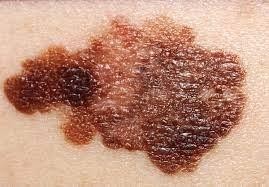A nurse is teaching a client about managing diverticulosis. Which of the following statements should the nurse make?
"Limit fiber intake to 20 grams each day."
"Decrease cellulose-containing foods in the diet."
"Take stimulating laxatives as needed."
"Limit daily fat intake to 30% or less."
The Correct Answer is D
Choice A rationale:
Increasing fiber intake is a key recommendation for managing diverticulosis.
Choice B rationale:
Cellulose-containing foods, such as whole grains and vegetables, are important sources of dietary fiber and are encouraged for managing diverticulosis.
Choice C rationale:
Stimulating laxatives are not recommended for managing diverticulosis and could potentially exacerbate symptoms.
Choice D rationale:
Limiting fat intake to 30% or less is a dietary recommendation for managing diverticulosis. A high-fiber diet is also important to prevent diverticular inflammation.
Nursing Test Bank
Naxlex Comprehensive Predictor Exams
Related Questions
Correct Answer is A
Explanation
Choice A rationale:
Warm water can help soothe the lesions and decrease painful urination, providing relief to the client.
Choice B rationale:
The client with genital herpes can still shed the virus and potentially transmit it to others even when there are no visible lesions, so this statement is incorrect.
Choice C rationale:
Genital herpes is a viral infection, and antibiotics are not effective in treating viral infections. Antiviral medications are used to manage genital herpes outbreaks.
Choice D rationale:
Soaking in a bubble bath can potentially irritate the lesions and worsen discomfort. It is not recommended for individuals with genital herpes.
Correct Answer is D
Explanation
Choice A rationale:
Radiation therapy is not typically the primary method of treatment for melanoma. Surgical excision and other therapies are often utilized.
Choice B rationale:
Metastasis in melanoma generally occurs from the outer layers of the skin to deeper levels and eventually to other parts of the body.
Choice C rationale:
Specific genetic mutations, such as mutations in the BRAF gene, are associated with an increased risk of developing melanoma.
Choice D rationale: Melanoma is a highly metastatic form of skin cancer that can spread quickly to other parts of the body. Early diagnosis and treatment are crucial to improve outcomes.

Whether you are a student looking to ace your exams or a practicing nurse seeking to enhance your expertise , our nursing education contents will empower you with the confidence and competence to make a difference in the lives of patients and become a respected leader in the healthcare field.
Visit Naxlex, invest in your future and unlock endless possibilities with our unparalleled nursing education contents today
Report Wrong Answer on the Current Question
Do you disagree with the answer? If yes, what is your expected answer? Explain.
Kindly be descriptive with the issue you are facing.
